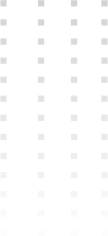Vacuum-bag-only Consolidation of Automated Fiber Placed Thermoplastic Composite Structures
The TPRC is currently investigating a two-step approach involving the rapid deposition of pre-impregnated thermoplastic tape using automated fiber placement (AFP) followed by vacuum-bag-only (VBO) consolidation as an alternative to AFP with in-situ consolidation.
Manufacuturing technology
Automated fiber placement with in-situ consolidation of thermoplastic composites is a very promising technology for the cost-effective manufacturing of large and complex aero-structures such as wings and fuselage sections. In the past decade, the industry has made considerable steps toward the application of the technology, however full scale implementation still requires further research and development with respect to consolidation quality. TPRC’s AFP + VBO project combines the lay-down of tape material at a cost-effective rate with an affordable post-processing step to ensure the required consolidation quality. Figure 1 represents the schematic of AFP + VBO two-step process.
Figure 1. Schematic of AFP + VBO two-step process
Project aim
The main aim of the project is to enable the cost-efficient out-of-autoclave manufacture of advanced components by developing material guidelines and process models. This requires a thorough understanding of the physical mechanisms that control the out-of-autoclave consolidation of fiber-placed thermoplastic laminates, for example the in-plane permeation and diffusion of entrapped air during different stages of the consolidation process for various material configurations (Figure 2).
The mechanisms have been explored qualitatively, such as, for example, the effect of sealing the edges of a stack on air removal (Figure 3).




